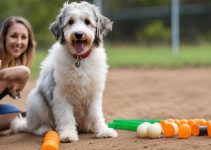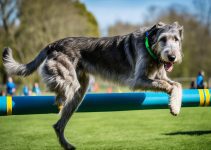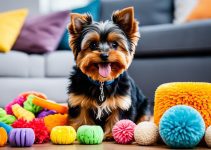Hello there! If you’re a proud owner of an Akita Inu or considering getting one, you’ve come to the right place. Akita Inus are immensely fascinating dogs known for their strength and independence. However, their unique characteristics require confident leadership and consistent Akita Inu training for them to become well-behaved companions.
Akitas were traditionally hunting dogs and can display aggression towards other dogs if not properly socialized. Yet, with early exposure and socialization, they can grow into wonderful companions. These versatile dogs excel in various dog competitions and thrive when given mental stimulation and a job to do. Respect is key when training an Akita, as they need to respect their owners’ leadership.
It’s important not to leave Akita Inus alone for long periods of time as they may become anxious and develop destructive behavior. While generally good with children, proper supervision and teaching kids to respect their boundaries is crucial. Early socialization is also essential, as Akita Inus can be standoffish with strangers.
Regular grooming is necessary due to their shedding. Despite some misconceptions and negative perceptions, Akitas can be incredibly well-behaved and loving dogs with proper training. Professional training programs, such as those offered by Royvon, can address specific behavioral issues and provide effective training techniques.
Unraveling Akita Inu Training
- Akita Inus are powerful and independent dogs that need confident and consistent leadership.
- Early exposure and socialization are key to shaping an Akita Inu’s behavior.
- Mental stimulation and a job to do are essential for keeping Akitas happy and engaged.
- Proper supervision and teaching children to respect boundaries is important when having an Akita Inu.
- Akita Inus can be standoffish with strangers, so early socialization is vital.
Starting Early and Being Consistent
To ensure effective akita inu puppy training, it is essential to start early and be consistent in your approach. By establishing clear boundaries and expectations from the beginning, you can lay the foundation for a well-behaved and obedient Akita Inu.
Consistency is key in training, so it’s important that every member of the household uses the same commands and rewards. This will help your puppy understand and respond to cues consistently.
Positive reinforcement is an effective method for training Akita Inus. Use praise and treats to reward your puppy for good behavior. This approach encourages them to repeat the desired actions and reinforces their understanding of what is expected of them.
Keep training sessions short and engaging to maintain your puppy’s attention. Young puppies have short attention spans, so it’s important to make the training sessions fun and engaging. Break up the training into short sessions throughout the day to prevent your puppy from becoming bored or overwhelmed.
Use clear and simple commands that are easy for your puppy to understand. Start with basic commands such as sit, stay, and come. As your puppy progresses, you can gradually introduce more advanced commands.
Remember that every puppy learns at their own pace, so be patient and understanding. Some puppies may pick up training quickly, while others may take more time. Stay consistent, positive, and patient throughout the training process.
Socialization is another crucial aspect of Akita Inu training. Expose your puppy to different environments, people, and animals from an early age. This will help them become well-rounded and comfortable in various situations.
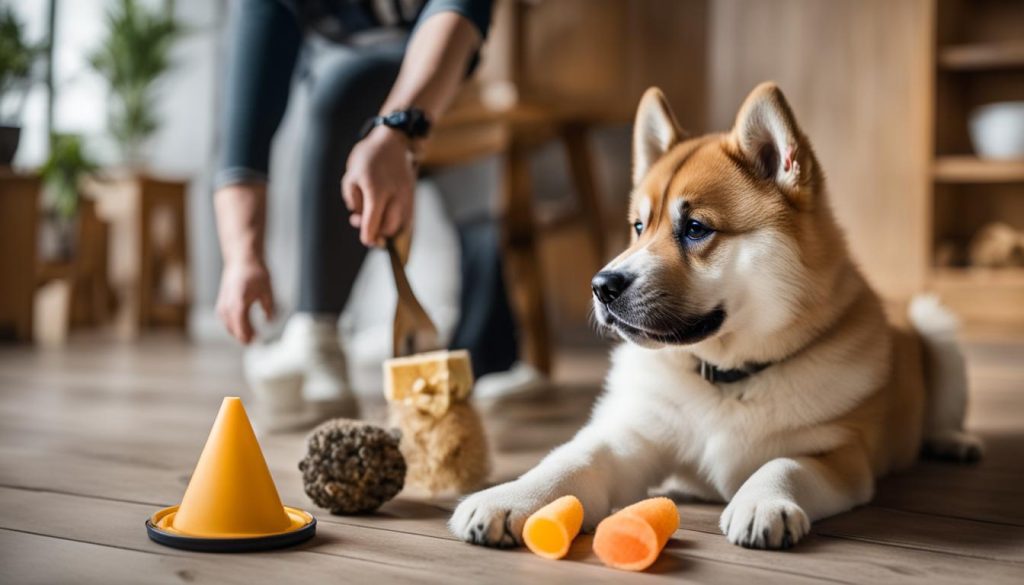
By starting early, being consistent, and using positive reinforcement, you can lay the foundation for a well-trained and well-adjusted Akita Inu. Remember to be patient, provide consistent guidance, and make training a positive and enjoyable experience for both you and your puppy.
Housetraining and Crate Training
When bringing home your Akita Inu puppy, it’s important to start housetraining as soon as possible. This will help establish good habits and prevent accidents indoors. To do this effectively, set up designated areas for sleeping, eating, drinking, and relieving themselves. This will help your puppy understand where they should go to the bathroom.
One method you can use is crate training. This involves using a crate as a safe and secure space for your puppy. Choose a crate that is the right size for your puppy, allowing enough space for them to stand up, turn around, and lie down comfortably. Gradually introduce your puppy to the crate, making it a positive place for them to be in.
To reinforce good behavior, use positive reinforcement techniques. Praise and rewards can go a long way in encouraging your puppy to use the designated areas and the crate correctly. Avoid punishment-based training methods as they can be detrimental to your puppy’s progress.
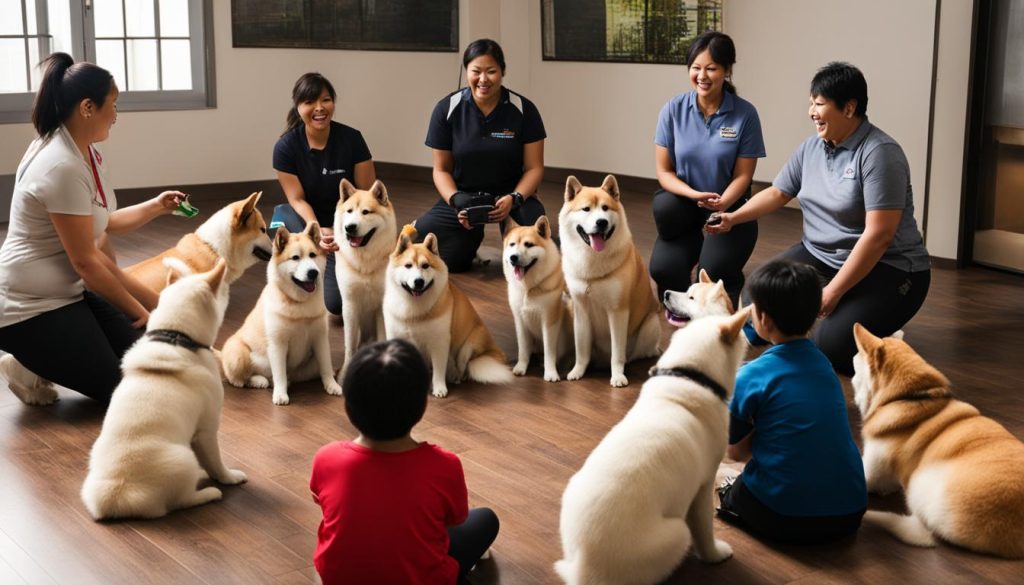
By consistently using positive reinforcement and redirection, you can effectively housetrain and crate train your Akita Inu puppy. Remember to take your puppy out frequently to prevent accidents indoors and be patient as they learn and adjust to their new routine.
Obedience Training Techniques
To ensure a well-behaved and obedient Akita Inu, it’s important to use effective training techniques that focus on positive reinforcement. By using rewards and consistent training methods, you can teach your Akita Inu basic obedience commands while building a strong bond.
Start with simple commands like sit, stay, and come. Use a calm and assertive tone of voice to give commands, and reward your dog with praise and treats when they perform the desired behavior. Remember to keep training sessions engaging and fun, as Akita Inus thrive on mental stimulation.
Mental stimulation activities, such as puzzle toys and interactive games, can keep your Akita Inu stimulated and happy. These activities not only provide physical exercise but also challenge your dog’s problem-solving skills.
One key aspect of successful training is earning your dog’s respect by being a firm and consistent leader. Show your Akita Inu that you are in control and set clear boundaries. This will help establish trust and reinforce your position as the leader.
Consider enrolling your Akita Inu in a dog training school that specializes in advanced training techniques. Professional trainers can provide guidance and tailored approaches to address specific behavioral issues and enhance your dog’s training.
Remember to be patient and set realistic expectations for your dog’s progress. Every dog learns at their own pace, so allow for time and practice. Avoid punishment-based training methods, as they can harm the trust-building process and hinder your dog’s learning.
By using positive reinforcement, mental stimulation, and professional guidance, you can implement successful training strategies for your Akita Inu. This will not only ensure their obedience but also strengthen the bond between you and your furry companion.
Conclusion
Training an Akita Inu can be both rewarding and challenging. To achieve successful results, it is essential to start training early, maintain consistency, and utilize positive reinforcement techniques. Socializing your Akita Inu puppy from an early age will help them develop proper behavior around different people and animals.
Housetraining and crate training are important aspects of raising an Akita Inu puppy. Establishing designated areas and following a consistent routine will help in teaching them where to eat, sleep, and relieve themselves. Using positive reinforcement and creating a positive association with the crate can also contribute to successful training.
When it comes to obedience training, focusing on positive reinforcement and clear communication is vital. Teaching your Akita Inu basic commands such as sit, stay, and come using rewards and praise will strengthen their understanding and compliance. Furthermore, enrolling in a professional dog training school can provide advanced training techniques tailored to your Akita Inu’s unique needs.
With patience, consistency, and the utilization of effective training methods, you can mold your Akita Inu into a well-behaved and obedient companion. Remember to seek professional help if needed and enjoy the journey of training your Akita Inu to their full potential.
FAQ
What are some effective Akita Inu training techniques?
Effective Akita Inu training techniques include positive reinforcement, consistency, and clear communication. Using rewards like praise and treats can encourage good behavior.
How can I start training my Akita Inu puppy?
Start training your Akita Inu puppy early by establishing clear boundaries and expectations. Consistency is key, and everyone in the household should use the same commands and rewards. Use positive reinforcement and keep training sessions short and engaging.
How do I housetrain my Akita Inu puppy?
To housetrain your Akita Inu puppy, set up designated areas for sleeping, eating, drinking, and relieving themselves. Use newspapers or crate training to establish where your puppy should go to the bathroom. Take your puppy out frequently and use positive reinforcement.
Are there specific techniques for leash training an Akita Inu?
Leash training an Akita Inu involves positive reinforcement, patience, and consistency. Start with short walks and gradually increase the duration. Use rewards for good behavior and redirect any pulling or lunging.
What are some advanced training techniques for Akita Inus?
Advanced training techniques for Akita Inus can include agility training, obedience competitions, and specialized tasks. Seeking professional guidance from a dog training school can be beneficial for advanced training.
How can I ensure successful Akita Inu training?
Successful Akita Inu training requires patience, consistency, and positive reinforcement. Setting realistic expectations and seeking professional help if needed can also contribute to successful training.
Can a professional Akita Inu training program help with specific behavioral issues?
Yes, a professional Akita Inu training program, like those offered by Royvon, can address specific behavioral issues and provide effective training techniques. Trainers can use their expertise to develop a customized training plan for your dog.


